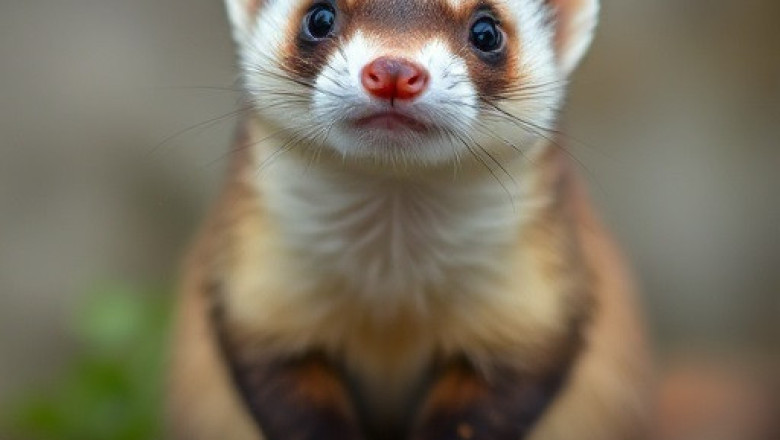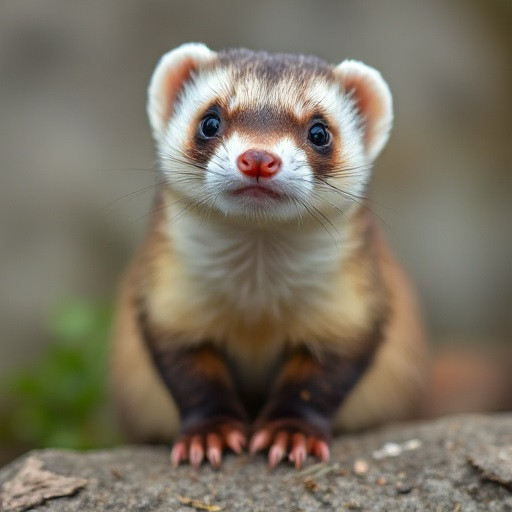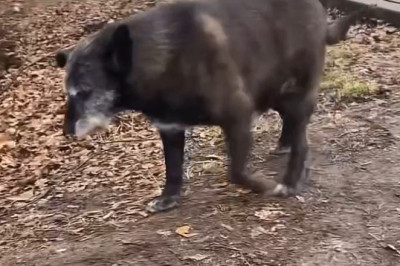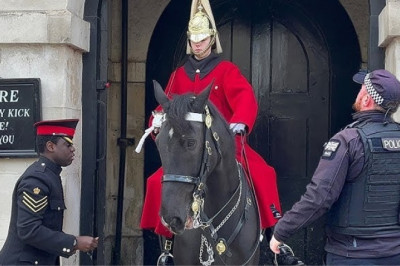
views
What Family Is A Ferret Part Of?
Ferrets are part of the Mustelidae family, which is a diverse group of small to medium-sized carnivorous mammals. The Mustelidae family includes well-known animals such as weasels, otters, badgers, and minks. This family is characterized by their elongated bodies, short legs, and keen hunting instincts.
Introduction to the Mustelidae Family
The Mustelidae family, also known as mustelids, is one of the largest families of carnivorous mammals, with over 50 species. These animals are found in a wide range of habitats, from forests and grasslands to aquatic environments. Mustelids are known for their agility, cunning, and diverse diet, which includes small mammals, birds, fish, and insects.
Ferrets: A Mustelid Member
Ferrets (scientific name: Mustela putorius furo) are domesticated members of the Mustelidae family. They have a long history of being kept as pets and working animals, particularly for hunting and pest control. Here are some key characteristics of ferrets:
-
Appearance: Ferrets have long, slender bodies, short legs, and a flexible spine, which allows them to navigate through tight spaces. They have a soft, dense fur coat that can vary in color, including albino, sable, and cinnamon.
-
Behavior: Ferrets are known for their playful and curious nature. They are highly active animals that enjoy exploring, tunneling, and engaging in interactive play with their owners.
-
Diet: As obligate carnivores, ferrets require a diet high in animal protein and fat. In the wild, their diet consists mainly of small mammals and birds, while domesticated ferrets are typically fed specially formulated ferret food.
Historical Background of Ferrets
The domestication of ferrets dates back thousands of years. They were originally used for hunting rabbits and controlling rodent populations. Their slender bodies and keen hunting instincts made them ideal for this purpose. Over time, ferrets became popular as pets due to their playful nature and companionship qualities.
Ferrets and Their Wild Relatives
Ferrets share many traits with their wild relatives within the Mustelidae family:
-
European Polecat: The European polecat (Mustela putorius) is the wild ancestor of the domestic ferret. They have similar physical characteristics and behaviors, although polecats are more solitary and less social than domesticated ferrets.
-
Weasels and Stoats: These small, agile mustelids are known for their hunting prowess. Like ferrets, they have elongated bodies and exhibit similar hunting behaviors.
-
Otters: Although otters are more aquatic, they share the mustelid family's playful and curious nature. Otters are known for their intelligence and problem-solving abilities.
-
Badgers: Badgers are larger mustelids with a more robust build. They are known for their burrowing habits and strong social structures within their groups.
Ferret Care and Habitat
Providing proper care and a suitable habitat for ferrets is essential for their well-being. Here are some tips for keeping ferrets happy and healthy:
-
Housing: Ferrets require a spacious and secure enclosure with plenty of room to explore and play. Multi-level cages with tunnels, hammocks, and hiding spots are ideal. Ensure the enclosure is escape-proof, as ferrets are skilled at finding small openings.
-
Diet: A balanced diet is crucial for ferrets. High-quality ferret food, supplemented with occasional treats like meat or eggs, provides the necessary nutrients. Fresh water should be available at all times.
-
Enrichment: Ferrets are intelligent animals that need mental and physical stimulation. Provide toys, tunnels, and interactive playtime to keep them engaged. Regular exercise outside the cage is also important.
-
Health Care: Regular vet check-ups, vaccinations, and parasite control are essential for ferrets. Monitor their health closely and address any issues promptly.
Fun Facts About Ferrets
-
Sleep Patterns: Ferrets are known for their unique sleep patterns. They can sleep up to 18 hours a day but are highly active during their waking hours.
-
Communication: Ferrets communicate through various vocalizations, including "dooking" (a happy, clucking sound) and hissing (a sign of fear or anger).
-
Flexibility: Ferrets have extremely flexible spines, allowing them to twist and turn in ways that seem almost impossible. This agility helps them navigate through narrow spaces.
-
Historical Use: In ancient Rome, ferrets were used to control rodent populations in granaries. They were also employed in medieval Europe for rabbit hunting, a practice known as "ferreting."
Conclusion
Ferrets, as members of the Mustelidae family, share many traits with their wild relatives while having their own unique characteristics as domesticated pets. Understanding their family background and natural behaviors can help you provide the best care for these playful and curious creatures. Whether you're a seasoned ferret owner or considering adding a ferret to your family, appreciating their place within the Mustelidae family adds to the joy of having these delightful pets.





















Comments
0 comment